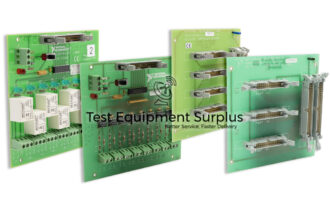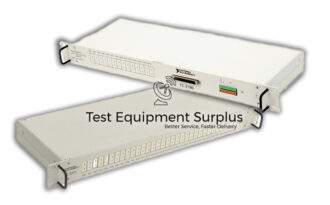Description
The PCIe-7820 is a PC-based R Series device, characterized by its reconfigurable digital I/O capabilities. It utilizes the Kintex-7 160T FPGA to provide a flexible and powerful platform for a variety of applications, including sensor simulation, waveform generation, and hardware-in-the-loop (HIL) testing. This device is designated with the part number 785361-01.
It comes equipped with 128 bidirectional digital channels and an additional 4 input channels, making it highly versatile for digital interfacing. The system supports external clock extraction, allowing synchronization with external devices, and can operate at a maximum clock rate of 80 MHz. This high-speed operation is essential for applications requiring fast and accurate data processing.
One of the key features of the PCIe-7820 is its support for most software-controlled parameters, offering users extensive control over operation settings. It operates at a default voltage of 3.3 volts, compatible with LVTTL and LVCMOS logic families, ensuring wide compatibility with other digital systems. For both output and sinking, the device can manage a maximum DC current of 4 mA per channel, with an input impedance of 50 ohms, optimizing the signal integrity and minimizing the loading effect on the circuits being interfaced.
| Specification | Details |
|---|---|
| Part Number | 785361-01 |
| Category | PC-based R Series |
| Model | PCIe-7820 |
| Short Description | Reconfigurable Digital I/O, Kintex-7 PCIe Device |
| FPGA | Kintex-7 160T |
| Digital Channels | 128 channels (bidirectional) |
| Input Channels | 4 |
| External Clock Extraction | Supported |
| Maximum Clock Rate | 80 MHz |
| Applications | Sensor simulation, waveform generation, HIL testing |
| Software-Controlled Parameters | Most parameters |
| Default Voltage | 3.3 volts |
| Compatible Logic Families | LVTTL, LVCMOS |
| Maximum Output DC Current (per channel) | 4 mA |
| Maximum Sink Current | 4 mA |
| Input Impedance | 50 ohms |
| Minimum Pulse
Question 1: What FPGA is used in the PCIe-7820? Question 2: How many digital channels does PCIe-7820 have? Question 3: What is the max clock rate of PCIe-7820? Question 4: What voltage does PCIe-7820 operate at? Question 5: What’s the PCIe-7820’s DC current per channel? |





